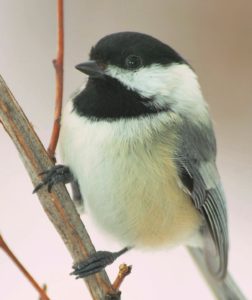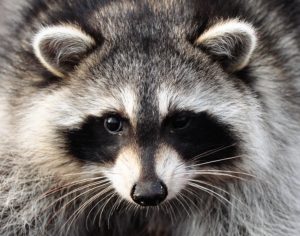Photography courtesy of Lowell Washburn, all rights reserved.
To say that the 2018 New Year got off to a chilling start would be a gross understatement. Once the mercury started to drop, it seemed as if the temperature free fall would never hit bottom. With wind chills plummeting beyond 40 degrees below zero, Iowa ranked as one of the coldest places on earth.
The final three days of the North Iowa goose season were beyond brutal. And although the snow and cold pushed thousands of Canada geese into the state, it quickly became obvious that the web-foots weren’t enjoying the weather any more than Iowa’s human population. Some of the geese I bagged actually had big, clear droplets of ice frozen to their tail, flank and neck feathers. It was so cold that when the flocks lifted off open water, the liquid turned to ice during the split second it would have taken to run off their plumage.
When you or I get cold, we simply crank up the thermostat. But for wildlife, the challenges of winter survival are more complicated. Seeing those geese provided a vivid reminder of the diverse ways Iowa wildlife successfully copes with extreme winter weather. For Canada geese, the survival solution was obvious. They were leaving town; migrating to a warmer climate with open fields and warmer waters. In the span of just three days, I saw the number of feeding geese dwindle from thousands to a single flock on New Year’s Day.
But while the skies over my goose blind were growing empty, the ground beneath my backyard bird feeders was getting busy. Arriving home, I tallied more than a dozen species happily guzzling offerings of sunflower, cracked corn, and suet. It was a dramatic change from the lackluster activity seen during the first part of our unseasonably mild winter. Unlike the Canada geese, these birds had decided to tough it out and stay put. As long as resident species like chickadees, nuthatches, and cardinals can find secure roosting cover and locate high energy food sources, they can easily withstand the coldest temperatures.
For backyard birds, survival tactics are simple but effective. In order to beat the subzero cold, birds eagerly consume all the food they can get their little beaks on. Forget counting calories. Fat and carbs are a wintering bird’s best friends.
For some woodland residents, survival strategies are more subtle. Inside a nearby den tree, a prime raccoon is curled into a tight ball. Unlike the birds at the feeder, the raccoon gathered its food during the fall. Nourished by a layer stored fat and protected from the cold by a luxurious coat of fur, the masked marauder will spend the remainder of the winter in a deep deep sleep.
Gazing across Iowa’s winter wetlands, the scene is more deceptive. Marshes that were alive with bird song, darting dragonflies and migrating ducks now appear frozen, stark and lifeless. But reality paints a much different picture. Although most wetland birdlife has moved far south, other wildlife species remain. The muskrat is perhaps most obvious. Although you’re not as likely to see this abundant furbearer after things freeze over, the species’ winter lodges dot the landscape. Muskrat colonies spent much of the fall gathering cattail, bulrush, and arrowhead roots. The materials were then used for cooperative efforts to construct sturdy well insulated houses. Furnished with a single room, the lodges serve a dual purpose. In addition to providing adequate shelter, lodges also become the primary winter food source. The plan generally works. But if the winter becomes too cold or grows too lengthy, muskrats may literally eat themselves out of house and home.
For other, more cold-blooded marsh dwellers, the quest for winter food is never an issue. Painted turtles, for example, are not even aware that winter has arrived. Like other wetland reptiles, turtles are buried in the wetland muck; riding out the season in a state of hibernation. In sharp contrast to the deep slumber of the raccoon, true hibernation is a coma-like state that approaches a complete systems shutdown. Hanging somewhere between life and death, painted turtles may spend nearly half of their year without eating, seeing, or moving.
But one by one, the months will pass. The days get longer as winter snow becomes melt water. Marshes thaw. Geese fly north. Emerging from its bed of marsh mud, a painted turtle eventually swims to the surface. Blinking in the warm April sunlight, the turtle feels a sudden surge of hunger. It’s as if it hasn’t eaten in months.
LW






 Tom Cope
Tom Cope Sue Wilkinson
Sue Wilkinson Susan Judkins Josten
Susan Judkins Josten Rudi Roeslein
Rudi Roeslein Elyssa McFarland
Elyssa McFarland Mark Langgin
Mark Langgin Adam Janke
Adam Janke Joe Henry
Joe Henry Kristin Ashenbrenner
Kristin Ashenbrenner Joe Wilkinson
Joe Wilkinson Dr. Tammy Mildenstein
Dr. Tammy Mildenstein Sean McMahon
Sean McMahon